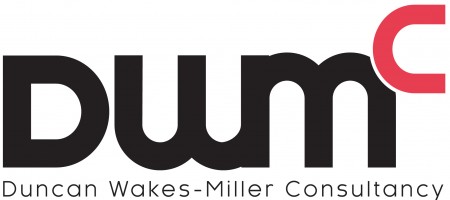
What does (marketing) success look like?

Businesses that have a clear vision are more successful because they understand what success looks like at every level. In my opinion, leadership that lacks a clear vision is often the root cause of not achieving success.
Successful leaders do not have nebulous ideas of the role and the proposition that their brand represents for customers, employees and partners. They have a firm grasp on the very purpose of why their business exists.
The way in which some businesses flip and flop around from one campaign to another is perhaps the most obvious evidence of lack of business vision. If one campaign doesn’t work it’s easy to promote another idea in the hope that it might bring instant success with less effort. The problem is, hope is not a strategy.
The good news is that it’s unusual for success to be completely unobtainable, as long as realistic targets are set. Most of the time the issue is around the trilogy of focus, clarity and priorities. Either business leaders don’t have a laser sharp vision of exactly what they want to accomplish, or they don’t have a viable strategy for turning their vision into a commercial reality. And it goes without saying they require the courage to act.
Strategy is a journey to a point of advantage
I believe a great definition of strategy is that it’s ‘a journey to a point of advantage’. The concept applies equally to strategies for individual and personal development as it does to businesses or brands.
Common sense dictates, if you don’t know exactly where you want to go, how can you get there? The reliability of the strategy is directly related to the clarity of the vision.
Route mapping is perhaps a good way of looking at it. The first step on the road to success (and more difficult than you may consider) is to answer these two questions: What do you want to achieve? And importantly, why?
The answers provide definition for the vision, which forms the single departure point for all thinking. This in itself serves two important ends. First, to provide definition for planned activity and secondly to provide a basis for its evaluation. If what you are doing (or planning to do) doesn’t support the vision then don’t do it. When I worked at Dell one of our 10 commandments of transactional marketing was ‘never do one-offs’. It’s a principle that still holds true.
Creatively visualise what success looks like
The next step is to creatively visualise what this could look like, both quantifiably and importantly qualitatively. Although both are important, I would suggest the emphasis here is on succinct quality descriptions, not necessarily just numeric measures. I would argue keeping the vision of success to a tight set of words rather than numbers. This serves to provide a meaningful target and is more motivational for everyone involved. Much as I personally love hard numbers (and they have their place) in my experience I’ve noticed it’sproblematic for teams to be motivated by a figure without individual relevance or meaning. Metrics are but measures of success.
Celebrate the soul of the organisation and leverage collective wisdom
Buy-in is important for success. If you can share your vision with others and bring them along as active participants, success will come more easily. In management speak this is often called ‘getting the right people on your bus’. But is it that simple? While conventional wisdom dictates it’s crucial getting the right people on your bus, by implication this statement also implies getting the wrong people off your bus is also important.
Getting rid of people is great for the ‘raw meat eating carnivores’ in the boardroom who invariably keep their jobs, but not particularly empowering for the remaining employees and trusted business partners. I would argue it is more commercially astute in today’s skill deprived environment to tap into every ounce of expertise and experience within an organisation and its partners to create an effective environment.
In simple terms, play to your strengths – all of them
We find that a deep immersion, at every level of business, enables us to help shape the vision for success, by drawing upon corporate intelligence and other DNA from the very soul of the organisation or brand. When we take the time to discover and tease out this information it never ceases to amaze us the abundance of talent within Australian businesses. Talent that in some cases, can, could or should achieve even more by aligning their own success goals with that of their organisation. And it’s not about lack of effort. These individuals are invariably not achieving the best because of poor leadership vision, broken internal communication, lack of personal empowerment or trust around shared goals. In this context it’s no surprise when an organisation departs from its core purpose it often ceases to enjoy success. A high performing business is akin to an individual who performs exceptionally well when they’re doing what they like and what they are good at. And importantly, with singular purpose.
This lack of alignment is not just an Australian problem it’s a global phenomenon. In the US, a survey by Richard Barrett in Liberating the Corporate Soul found that out of 23,000 American workers, only 37% had a clear understanding of what their organisation is trying to achieve. Only 20% said they had a clear ‘line of sight’ between their tasks and the organisational goals. Only 20% trusted the organisation they worked for and only half of them were satisfied with the work they had completed by the end of the week. Clearly, generating a focused employer-branding proposition is crucial for leaders positioning their organisations for success in today’s highly competitive environment.
Respond and evolve, consciousness of success
All too often, driven by commercial pressures, companies try to drive staff alignment by restructuring. This often purges organisations of the very experience and talent they need to achieve success. I’d suggest that rather than just reacting, businesses should respond with consciousness to the challenges they face. This can be achieved by taking two important steps, firstly rallying around their core purpose and then reinvigorating their goals collaboratively, right down to an individual level. Only then can they decide fairly and effectively who is in and who is out. It’s not complicated and doesn’t need to take too long. Indeed, this approach leads to short-term positive commercial outcomes and, in a way, protects the organisation’s long-term collective intelligence.
An important bi-product is that it also engenders greater employee trust, as it’s simply doing the right thing.
Enjoy every step
Something I’ve found useful is to break down the route to success into a series of achievable chunks, and to share them amongst the team with a clear vision of what ultimate success looks like. It’s important after all to feel success throughout the journey. These ‘quick wins’ provide satisfaction and, by building your capabilities en route, you also create an unassailable positive momentum.
Ask the right questions and keep the answers simple. Engender trust by learning from your mistakes and readjusting as a team at each key milestone.
After all, success is both a journey and a destination.
This article was originally published in Marketing Magazine Australia but is a question we potentially all need to address.
